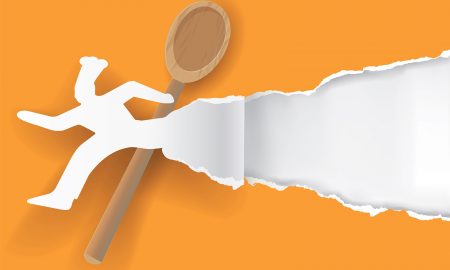 Today, we’d like to introduce you to Petra Kuppers.
Today, we’d like to introduce you to Petra Kuppers.
Hi Petra, so excited to have you on the platform. So before we get into questions about your work life, maybe you can bring our readers up to speed on your story and how you got to where you are today.
Here is the story of how I came to write about atrocious murders in Ypsilanti, Ann Arbor, and Detroit. I was raised in Germany and lived in the UK for a decade before I moved to Michigan in 2001. I learned about my new home by physically exploring my neighborhoods with my wheelchair and reading about the area and its history.
I traveled from Ann Arbor to the Detroit airport about a decade ago, waiting at a bus stop by the Ann Arbor Public Library. I was a bit early, so I went into the library and found The Michigan Murders, a book by Edward Keyes, on the free bookshelves there.
I took the book, started reading on the bus, and was immediately pulled into the world of the late 1960s, the years around my birth: young women being students, dancing, visiting friends, going to the lakes. I read about the danger that emanated from men who tried to stop them and about a murderer who killed local women and left their bodies in abandoned lots and empty farm buildings around Ypsilanti and Ann Arbor.
The book shook me and made me see my new home with very different eyes. For the next decade, I did a lot of creative work engaging with the land of my white settler home: looking at toxicity levels and what happened to the Huron River; tracing violence and segregation, red-lining and historical neighborhoods in my area; becoming aware of the violence against Indigenous women in our border region; tracking the industry changes around (man-made) Ford Lake.
These old Ypsilanti and Ann Arbor murders kept coming up again and again in the memory of people I spoke with, in the ways that older people think about college students around here. And then, about eight years ago, my wife and I bought a home in Ypsilanti, and it turned out that it was just a few houses down from the murder house, the site where the final incriminating evidence in the Michigan Murders was found.
I decided to focus my most recent poetry collection on these murders and to wheel around my locality, looking at the land and its relationship to life and death. The result of these examinations is my fourth poetry collection, Diver Beneath the Street, published in spring 2024 with Wayne State University Press.
Can you talk to us about the challenges and lessons you’ve learned? Looking back, would you say it’s been easy or smooth in retrospect?
The core struggle was how to write about murdered women without becoming a voyeur, without focusing on the salacious details of their suffering.
The poetry collection that emerged, Diver Beneath the Street, does not offer details about the murdered women and does not engage with the killer. Instead, I look at the changes to the land where the murders took place, at the soil and its recycling function, at nematodes and springtails, and at the inhabitants of the soil. I write about what happens to organic matter that decays.
During my writing, in 2019, another serial killer began to haunt Detroit, and this man killed older women and left them in abandoned Detroit buildings. The pain of these killings is fresh, and I had to be particularly careful not to sensationalize the murderer and erase the victims. I visited some of these murder sites, too, and wrote about the land in the context of Detroit’s land-use changes.
The final thematic strand of the book is my own experience of near-death and the world’s experience with lock-down: I write about a life-threatening accident I had in the past, about disability experiences and hospitals, and also about a serious encounter with Covid19 in March 2020, very early in the pandemic, before vaccines.
Can you tell our readers more about what you do and what you think sets you apart from others?
I am a disability culture activist and a community performance artist: someone who creates art with fellow disabled people. The Diver Beneath the Street collection emerged when I couldn’t work in my usual ways, i.e., being with people, creating performances together, and engaging in somatic work that allows us to explore pain and joy in new ways in our body, mind, and spirits. For much of 2020 and some of 2021, we all were in lockdown: thrown back into our own homes, often small apartments, segregated and afraid of one another and of what the outside world would bring to us.
Like many other performance artists, I had to reinvent how we could do things and how to bring people together. My collaborator and wife, dancer and poet Stephanie Heit, and I run Turtle Disco, a community performance and writing studio in Ypsilanti, where we held weekly sessions pre-pandemic: Contemplative Movement, Queer Dreaming, various improvisation and movement forms. When the pandemic hit, for us, the answer was to create a community online. We shifted Turtle Disco into an online space, and we held weekly Kaffeeklatsches, inviting fellow disabled and queer people to come together online and talk about their creative lives in these isolating times.
It was a beautiful experiment, and it is still ongoing. Turtle Disco is now both in-person (for small movement and writing events, masks very welcome), and online (for instance, for weekly Starship Somatics sessions online through Movement Research: going on meditative movement experiences together, diving into the soil or soaring to other planets). Many of these online experiences — using our imagination to walk, move, and fly — are part of the Diver Beneath the Street collection.
Risk-taking is a topic that people have widely differing views on – we’d love to hear your thoughts.
Writing about the membranes of death and life is a risky business – just as it is risky to hold on to pandemic protocol at a time when many people try to forget the risks. In my community, the disabled community, many people are still very careful around the viral protocol, and many of my friends and collaborators struggle with long Covid – all realities that the wider world is trying to forget.
Bringing attention to the fragility of our community and those too easy to forget is risky business – but it is vital business, just as it is vital to continue to be creative, find ways of coming together online, and support one another in a world that carries risk. Turtle Disco as a community performance and writing studio and the Diver Beneath the Street poetry collection are two ways I try to work with these risks and witness our rich and gorgeous world.
Contact Info:
- Website: www.petrakuppers.com
- Instagram: @petraturtledisco
- Other: https://wsupress.wayne.edu/9780814351116/diver-beneath-the-street/





 Image Credits
Image Credits
Tamara Wade, Edward Smith, Fenia Kotsopoulou, and Brad Norr











